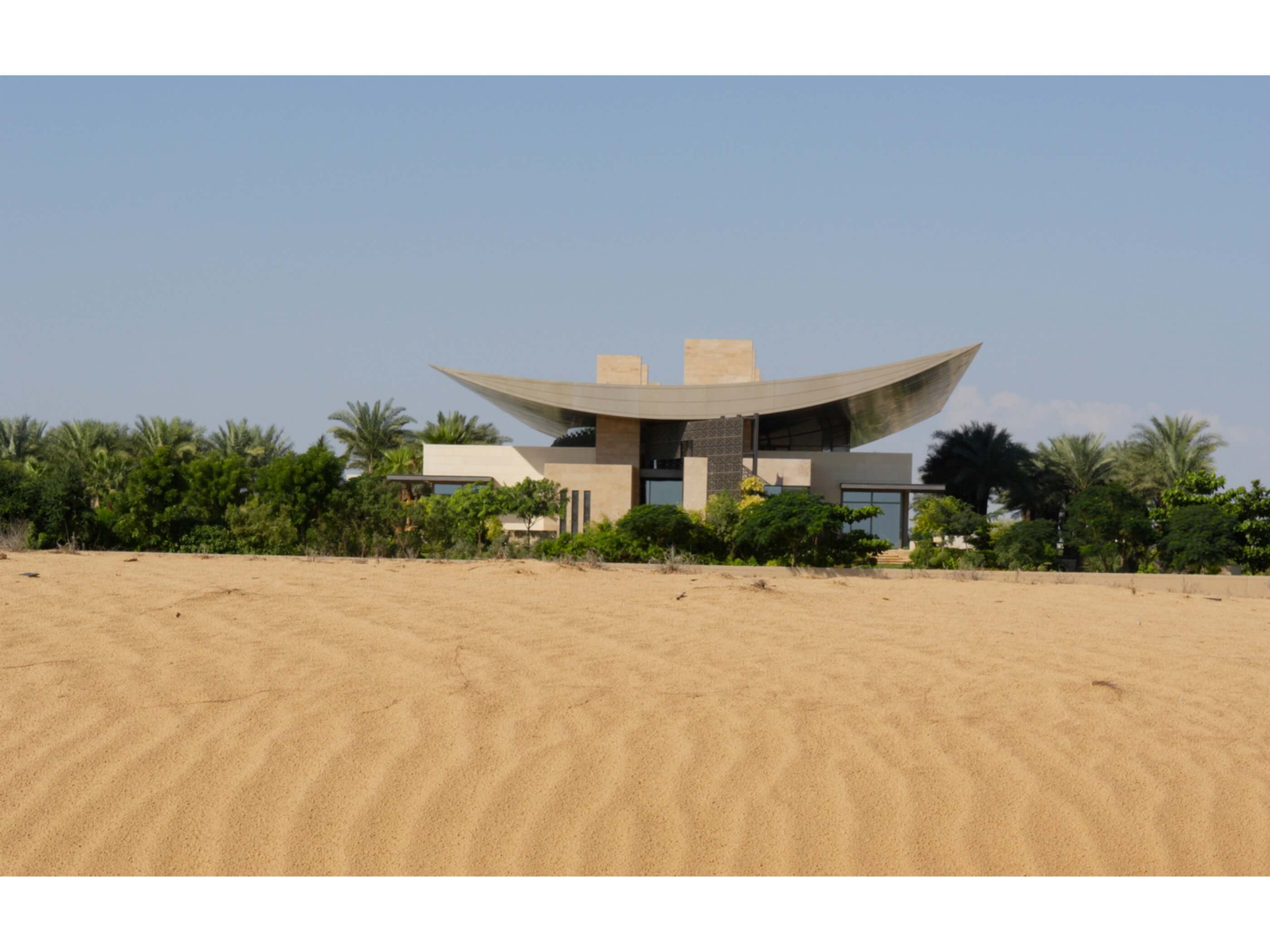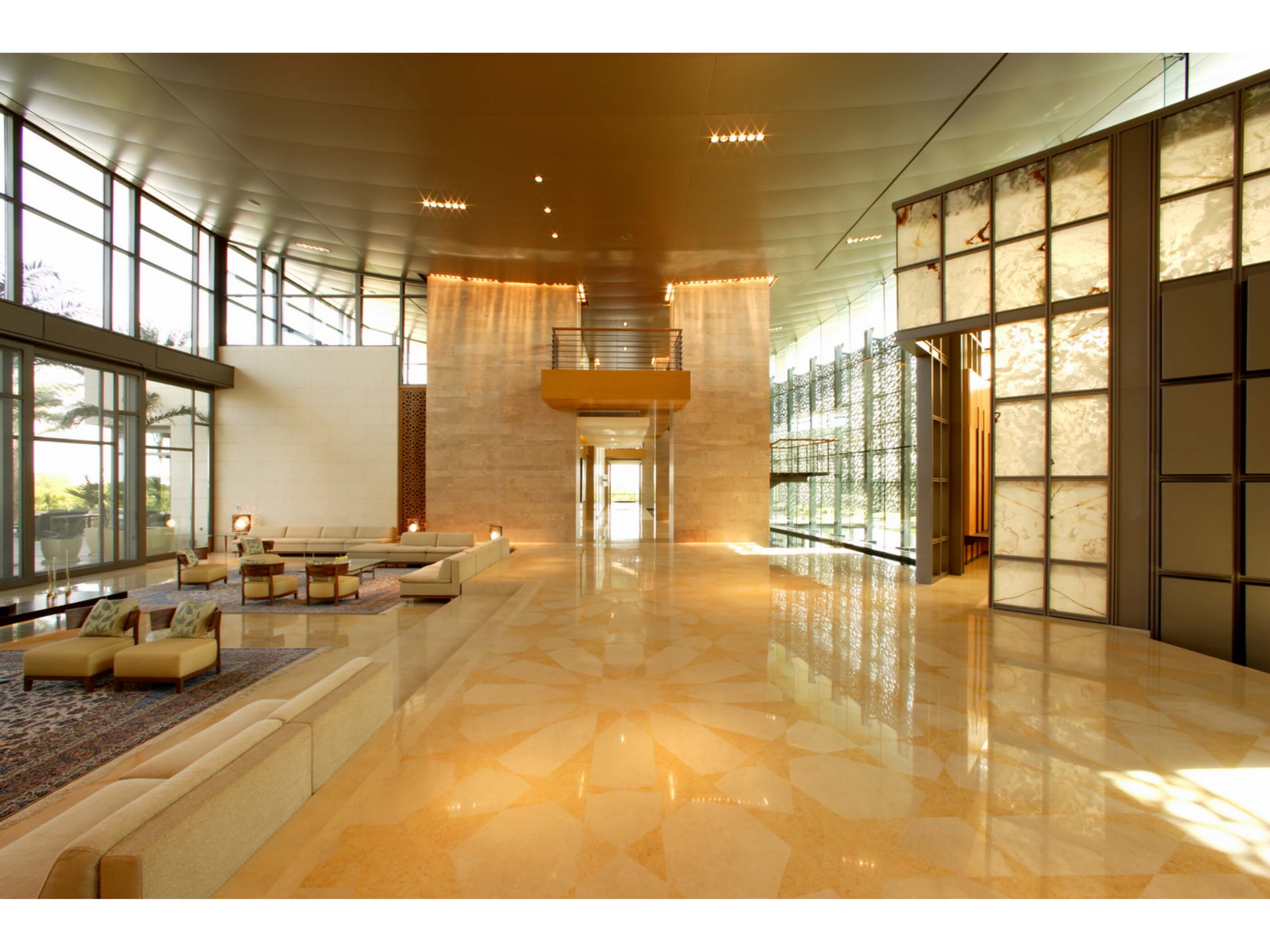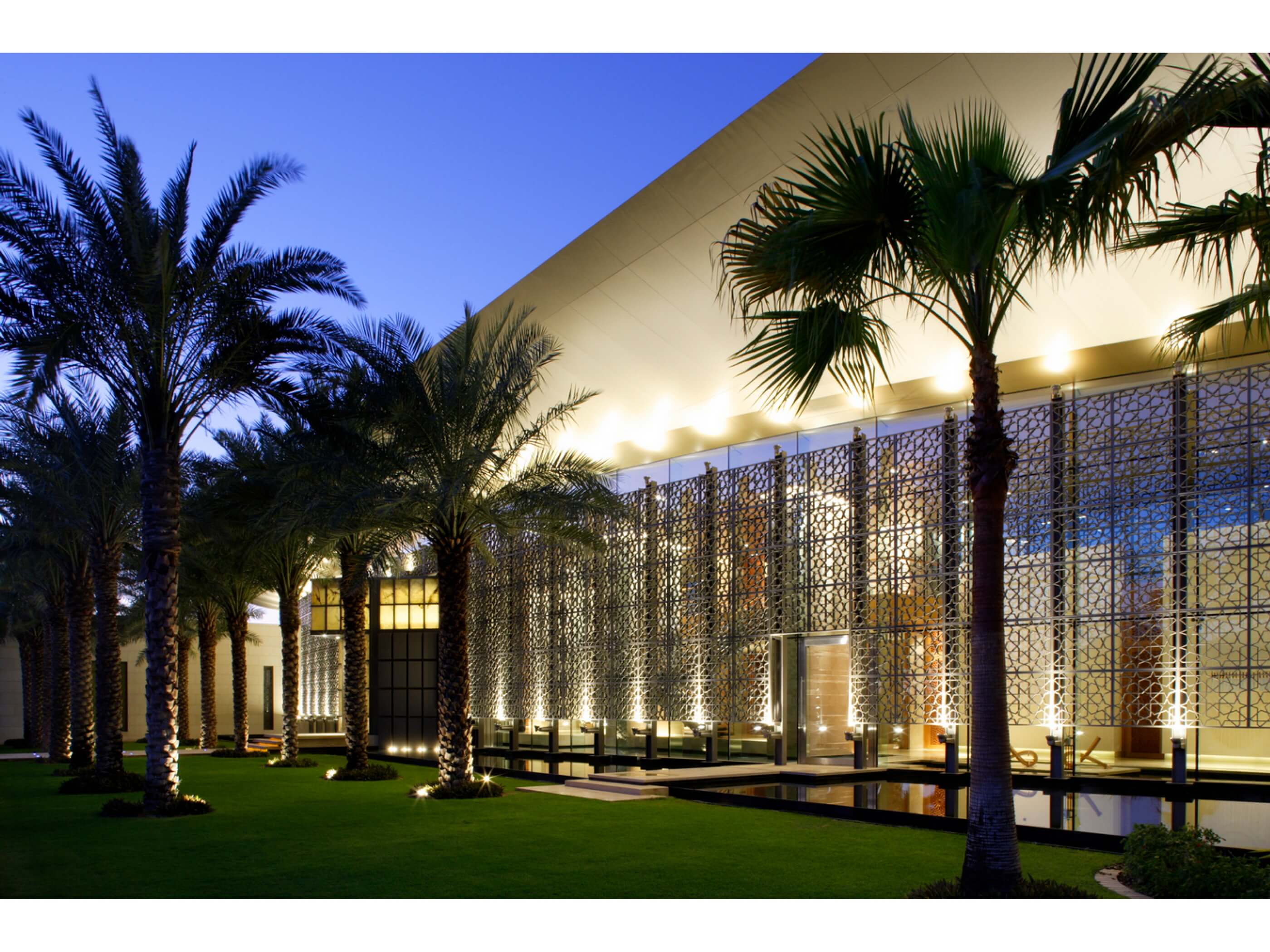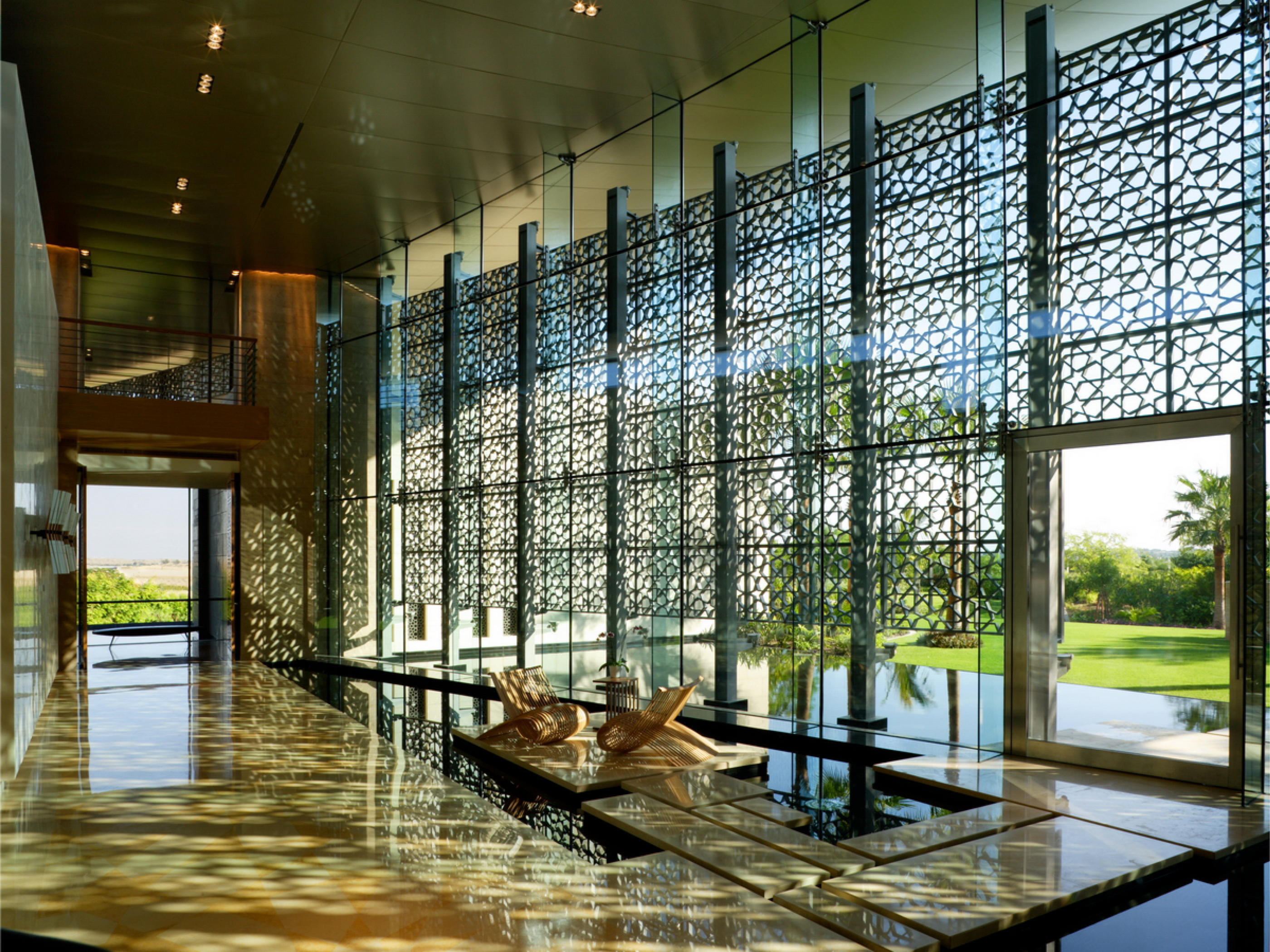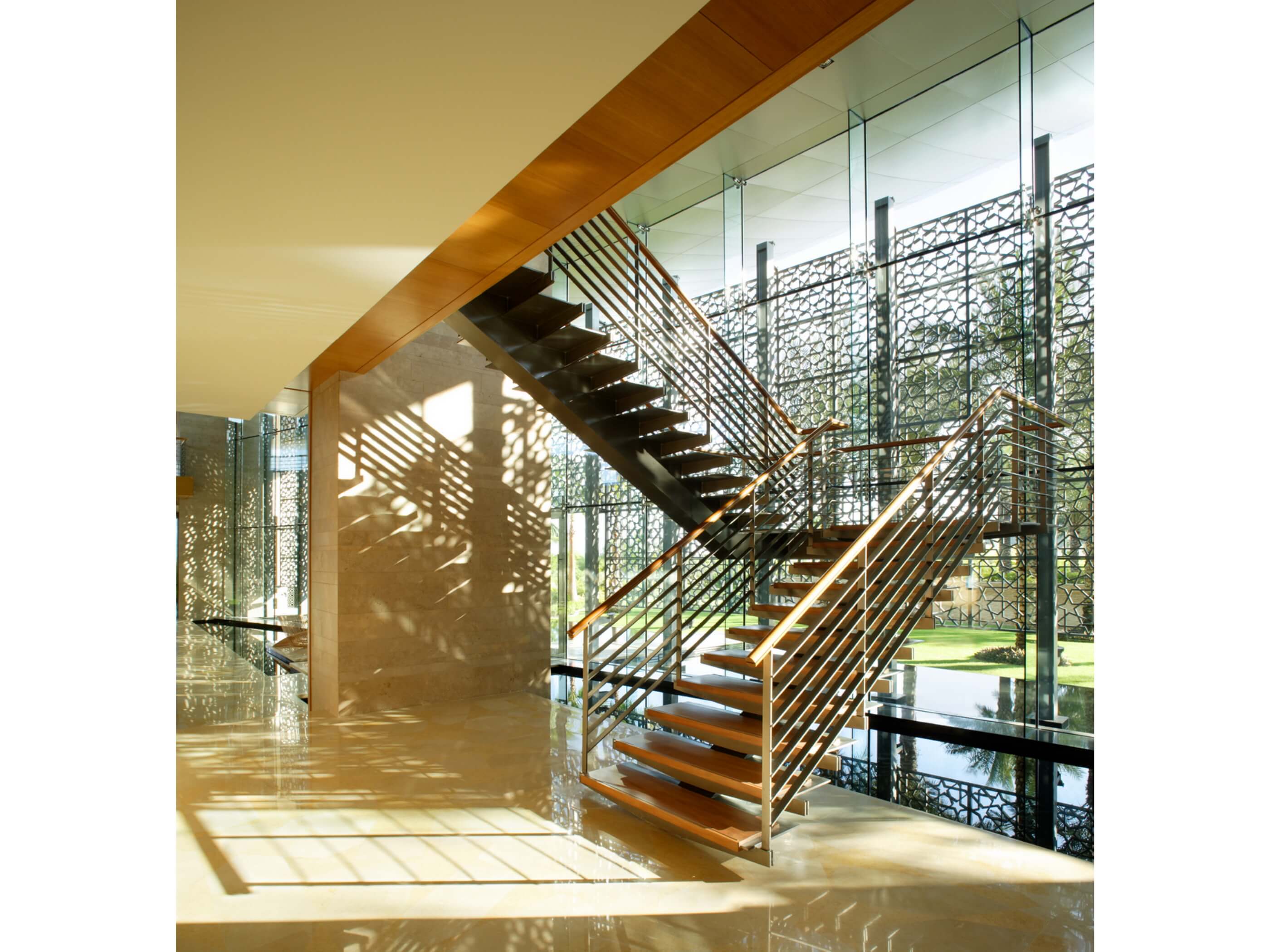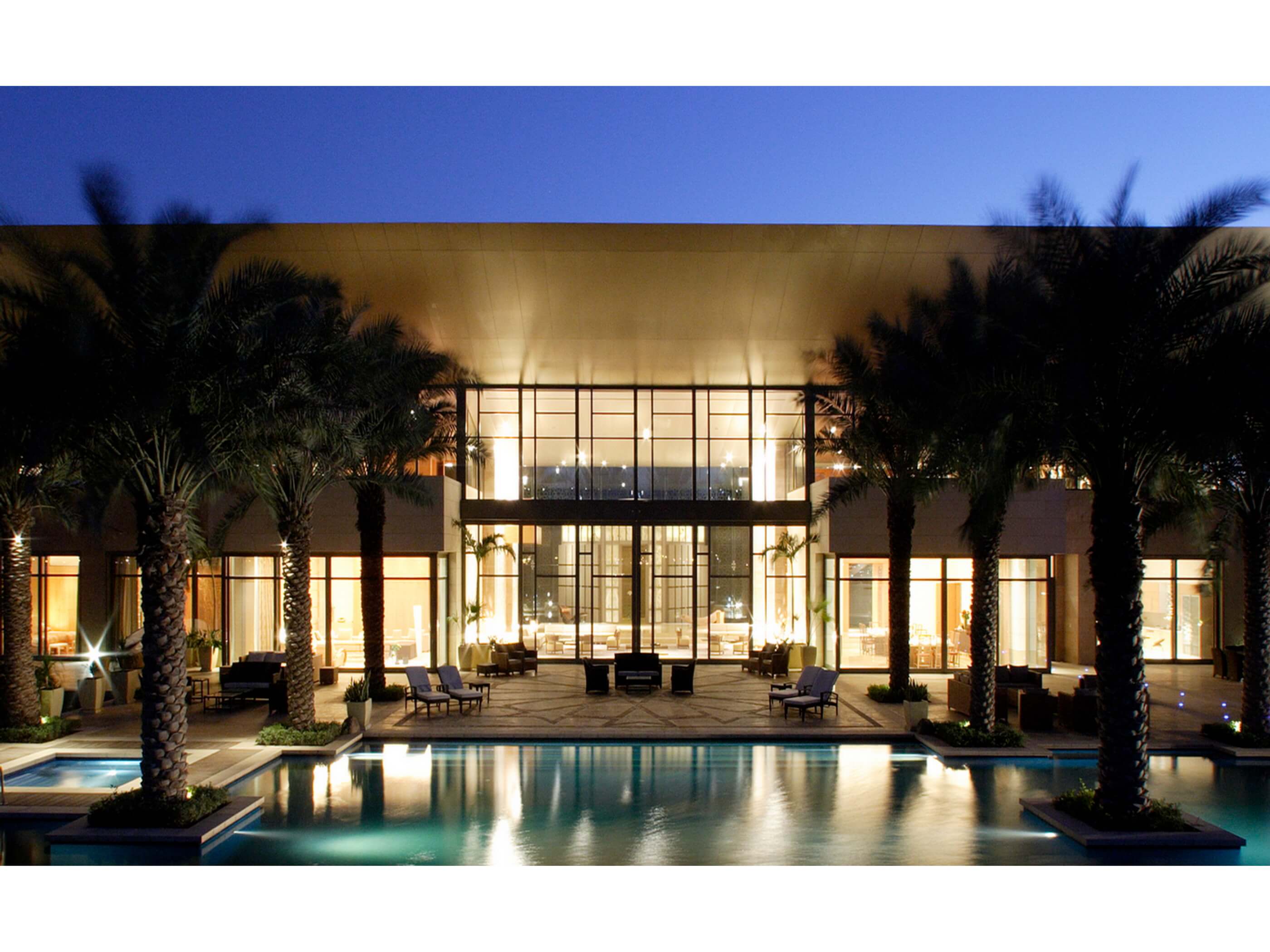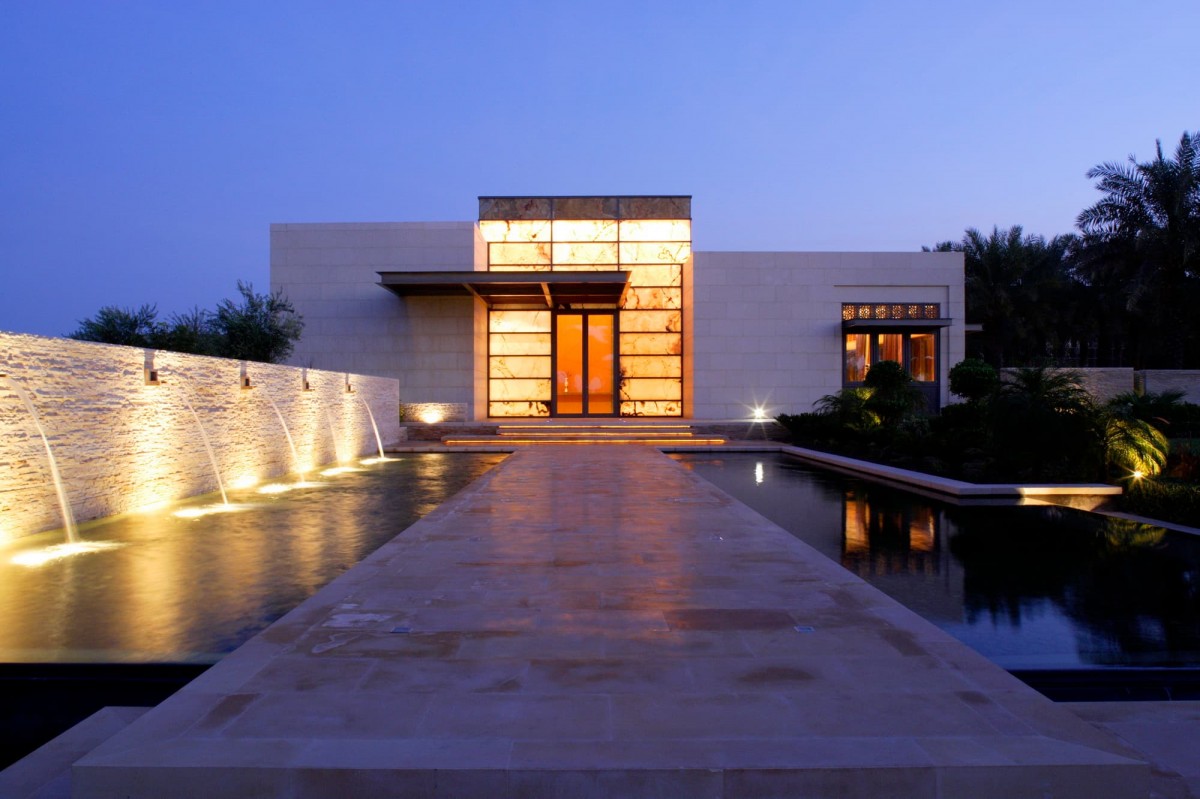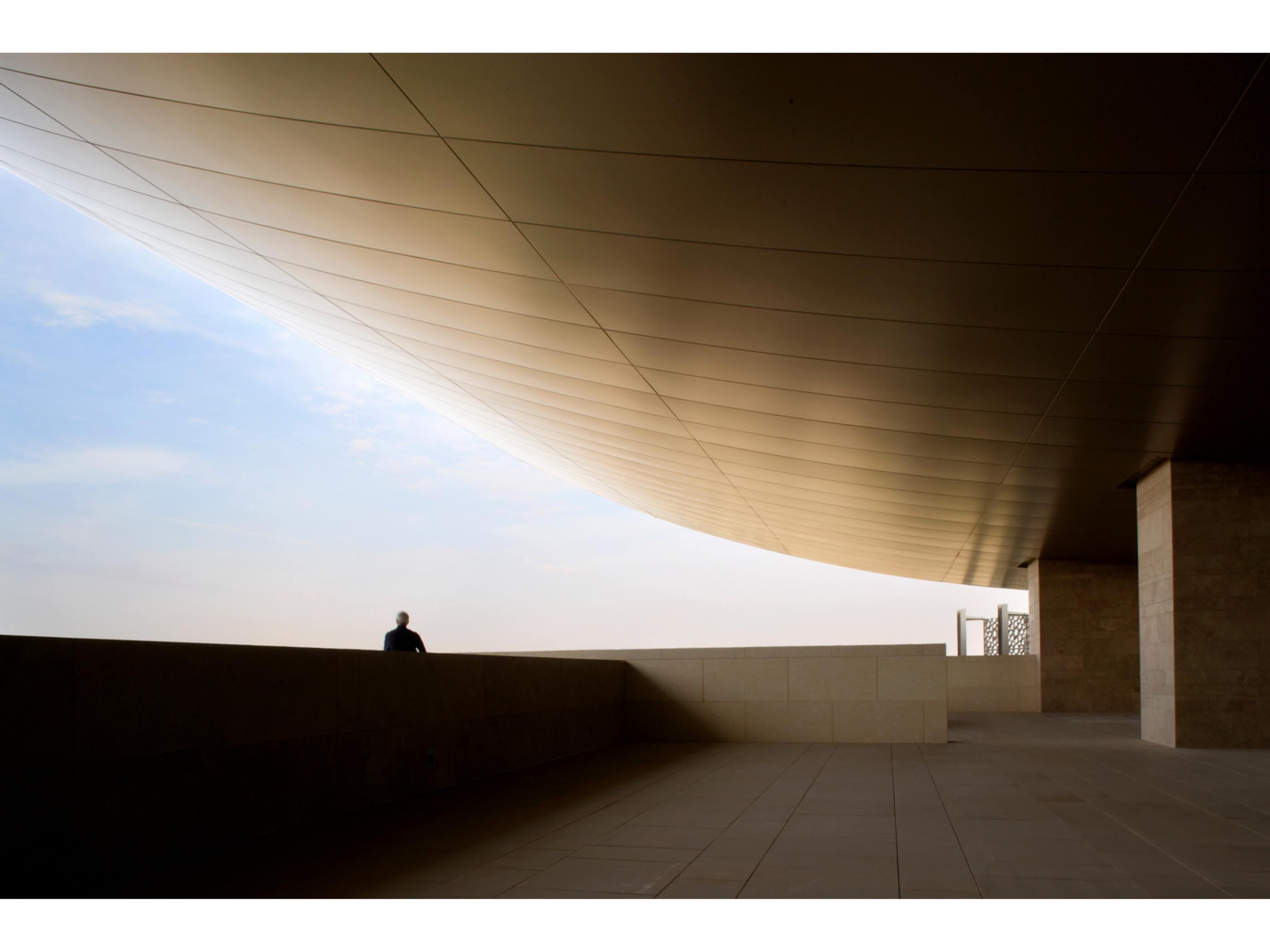Islamic culture is embodied and reinterpreted through modern technology and design in this 35,000-square-foot residence in the United Arab Emirates. Searing temperatures and ample desalinated water allowed the desert site to be transformed into an oasis with pools and landscaping.
Sheathed in shimmering aluminum, a massive curved roof shelters and unites the compound's series of two-story buildings. In section, the canopy forms a crescent moon, the symbol of new life that tops the minarets of Islam. The canopy is supported by stone-clad columns that function as mechanical exhaust vents; they pierce the roof and project up to the sky, reminiscent of traditional windcatchers in the age before air conditioning. The whole structure suggests a giant Bedouin tent, with the football-field-sized roof, cantilevered 30 feet on each side, casting a giant swathe of shade.
The main entrance is approached through date palm grove aisles. A reflecting pool, which flows indoors and provides cooling, surrounds the front facade. A moucharabie, the traditional lattice sunscreen, filters direct sun. Gardens, fountains, shady courtyards, and terraces surround and penetrate the buildings, making it a desert paradise.
The three-part plan separates the reception area (majlis) for male guests at the west from the women's area behind the central grand hall and the family's sleeping quarters to the east. In a dance between ancient and modern, massive stone walls are counterpoint to large expanses of glass and taut elements of steel. Shadows of contemporized Islamic patterns from the moucharabie are cast onto stone floors and shimmer in the reflecting pools.
“Like Dubai itself, the house is adapting traditions while working toward the future.” - Steven Ehrlich, Founding Partner
Location
Dubai, UAE
Year
2006
Size
35,000 sf
